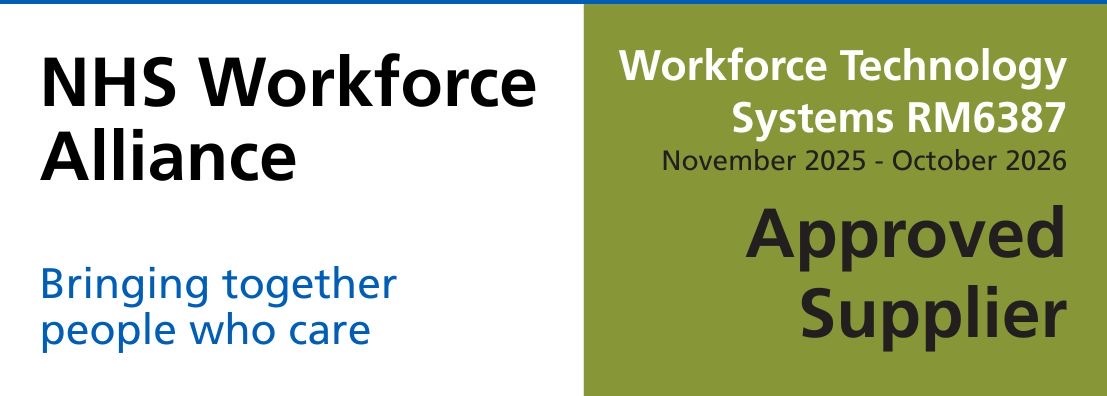
Blog by Flexzo
Rethinking NHS Recruitment: A Better Way to Manage Workforce Needs
NHS leaders are fighting the wrong battle. While debates rage about funding settlements and capital investment, a more immediate crisis is quietly draining millions from frontline care. The culprit: how we’re spending the money we already have.
A recent analysis of one mid-sized NHS trust revealed they spent £12.3 million on insourcing in a single year.
Of that, £3.6 million went straight to provider margins.
That’s £3.6 million that could have funded additional nurses, upgraded equipment, or expanded services.
We need to point out that our current approach to workforce challenges is fundamentally unsustainable. And it’s time for NHS leadership to demand better.
The True Cost of Workforce Inertia
The NHS workforce model wasn’t designed for today’s challenges. Built around permanent employment at single trusts, it creates artificial barriers that force leaders into expensive workarounds.
Take the ENT service at this Midlands trust. With 7,091 patients waiting and only 46.4% meeting RTT targets, the pressure was enormous. The obvious solution seemed to be insourcing additional capacity.
But the mathematics were brutal. Each 20-patient clinic cost £3,120 through traditional insourcing. The NHS tariff for those same patients was £3,113. They were losing £7.08 per patient treated – before even considering the opportunity cost of those margin payments.
The result stems from workforce systems that can’t adapt to modern demand patterns. When your only options are permanent recruitment (too slow) or expensive outsourcing (unsustainable), you end up making choices that drain resources while barely addressing the underlying problem.
Why Traditional Solutions Have Reached Their Limit
The conversation about NHS workforce usually focuses on recruitment numbers and training pipelines. These matter, but they miss the fundamental issue: we’re not using existing capacity efficiently.
Thousands of qualified healthcare professionals want more flexible working arrangements. They’re willing to work additional hours, travel between sites, and take on challenging shifts – but our administrative systems make this unnecessarily complicated.
Meanwhile, trusts are paying premium rates to external providers for exactly this flexibility. The irony is stark: we’re outsourcing solutions to workforce problems that we could solve internally if our systems were designed differently.
The current model creates several compounding problems:
Artificial Scarcity
Healthcare professionals often live within reach of multiple NHS sites but can’t easily work across them due to administrative barriers. We’ve created artificial scarcity through system design rather than genuine shortage.
Margin Multiplication
Every layer of intermediary adds cost. Agency fees, insourcing margins, and administrative overhead compound until the actual cost of delivering care becomes a fraction of what trusts pay.
Planning Inflexibility
Traditional recruitment cycles mean additional capacity takes months to deploy. By the time new arrangements are in place, demand has often shifted, creating constant misalignment.
Emergency Displacement
When permanent staff are redeployed to emergency care, planned work suffers. This necessary prioritisation creates a vicious cycle where elective capacity never stabilises.
The Leadership Challenge: Embracing Workforce Innovation
Progressive NHS leaders are starting to recognise that workforce transformation means working differently. The question: can we create systems that use existing talent more effectively?
Forward-thinking leaders now treat workforce flexibility as a strategic advantage.
The technology now exists to make this transformation practical. Platforms like Flexzo AI can manage the complexity of matching qualified staff to specific requirements while maintaining full compliance with NHS standards. What once required armies of administrators can now be automated, reducing both cost and complexity.
The Midlands trust case demonstrates what’s possible. By switching from traditional insourcing to Flexzo’s AI-powered workforce platform, they transformed their economics entirely. The same ENT clinics that cost £3,120 through insourcing could be delivered for £1,800 using Flexzo’s intelligent staff matching.
The platform’s AI system could plan optimal schedules, match staff from a database of over 110,000 compliant candidates, handle compliance automatically, and coordinate multi-site working seamlessly.
The result: instead of losing money on each patient treated, they retained £1,313 per clinic session for reinvestment in patient care.
A New Framework for NHS Workforce Strategy
The implications extend far beyond individual trusts or specialties. If one trust can save £382,914 annually just by changing how they staff ENT services, what could system-wide transformation achieve?
The mathematics are compelling. Across gynaecology, orthopaedics, dermatology, and other specialties facing similar challenges, the potential savings run into millions per trust. Nationally, we’re talking about billions that could be redirected from administrative overhead and provider margins into actual patient care.
But this requires NHS leaders to challenge some fundamental assumptions about how healthcare work gets organised.
From Employment to Collaboration
Instead of seeing staff as belonging to individual trusts, we need collaborative models where qualified professionals can work flexibly across the system based on demand and their own preferences.
From Manual to Automated
Workforce planning shouldn’t require endless phone calls and spreadsheets. AI can handle the complexity of matching skills, availability, compliance, and location requirements at scale.
From Reactive to Predictive
Rather than scrambling to find staff when problems emerge, intelligent systems can anticipate demand patterns and proactively ensure capacity is available where and when it’s needed.
From Cost to Investment
Workforce flexibility isn’t an additional expense – it’s a way to maximise the value of existing NHS investment while improving both staff satisfaction and patient outcomes.
The Path Forward: Technology as an Enabler
Solutions like Flexzo AI exist today to transform NHS workforce management. What’s needed is leadership willing to embrace new approaches rather than defaulting to expensive workarounds.
This doesn’t mean abandoning the principles that make the NHS special. It means using modern tools to deliver those principles more effectively. Better staff utilisation, reduced administrative overhead, and improved patient access all express core NHS values more effectively.
The choice facing NHS leaders is stark. Continue accepting that 30% of workforce spending disappears into provider margins, or invest in systems that keep those resources within the NHS where they belong.
Some trusts are already making this transition. They’re discovering that workforce flexibility creates cost savings while building resilience into healthcare delivery. When staff can move efficiently between sites based on demand, when compliance checking is automated, and when planning cycles are measured in days rather than months, the entire system becomes more responsive to patient needs.
Beyond Individual Trusts: System-Wide Transformation
The real opportunity goes beyond helping individual trusts improve their workforce economics. We need connected systems where healthcare professionals can contribute their skills where they’re most needed, when they’re most needed.
Imagine a system where:
Flexzo AI’s collaborative staff bank demonstrates what’s possible when technology removes traditional barriers. Healthcare professionals gain unprecedented flexibility and control over their careers, while NHS trusts access a wider pool of qualified candidates without agency fees or administrative overhead.
A Call for Strategic Leadership
NHS leaders have spent decades managing the symptoms of workforce inflexibility. It’s time to address the cause.
The £3.6 million this one trust lost to provider margins isn’t unusual – it’s typical. Across the NHS, billions are being spent on workforce solutions that could be delivered more effectively, more cheaply, and with better outcomes for both staff and patients.
The question isn’t whether change is needed. The question is whether NHS leadership will embrace the tools that can deliver that change, or continue accepting expensive workarounds as the price of doing business.
The stakes are too high for incremental thinking. Patients are waiting, staff are burning out, and resources are being wasted on an industrial scale. The technology exists to do better. The only question is whether we have the leadership to use it.
The future of NHS workforce management will be built on intelligent systems that connect qualified professionals with the patients who need their skills. The choice is whether we build that future, or continue paying others to provide expensive alternatives to it.
Get in Touch
Ready to transform your Trust’s approach to workforce management?
Our healthcare workforce experts understand the complex challenges facing NHS leaders today. We can demonstrate how collaborative recruitment models align with modern workforce needs and show you the measurable impact on costs, efficiency, and patient care outcomes.






